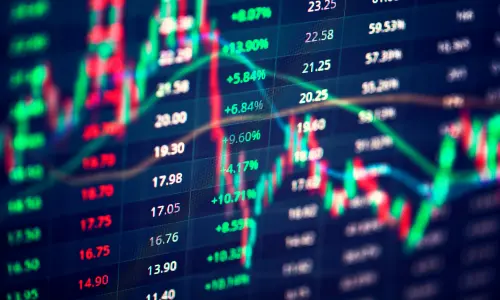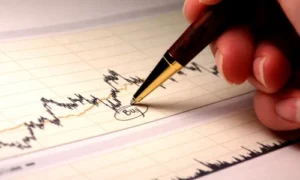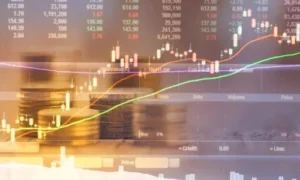Why is no one talking about ASX VAS? Discover the hidden Gem for today

Have you heard about ASX VAS, the hidden gem that everyone seems to be overlooking? In the fast-paced world of investments, it’s easy to get caught up in the latest trends and overlook the potential of a steadfast performer like VAS. While the buzz may be circulating around other options, ASX VAS quietly holds its ground, offering stability and growth potential that shouldn’t be underestimated.
In a sea of flashy investment opportunities, ASX VAS is like a well-kept secret waiting to be discovered. Its consistent performance and reliability make it a compelling choice for both seasoned investors and those looking to dip their toes into the market. So why is no one talking about ASX VAS? It’s time to uncover the hidden gem that could be the game-changer for your portfolio today.
Understanding the ASX VAS ETF
The ASX VAS, or the Vanguard Australian Shares Index ETF, is an exchange-traded fund that aims to track the performance of the S&P/ASX 300 Index. This index represents the largest 300 companies listed on the Australian Securities Exchange, providing investors with a broad exposure to the Australian equity market. VAS is designed for those who seek to invest in a diversified portfolio of Australian shares without having to pick individual stocks. By investing in this ETF, you essentially buy a piece of each company within the index, allowing for risk mitigation through diversification.
VAS is managed by Vanguard, a well-respected name in the investment industry known for its low-cost index funds. The ETF offers a simple and efficient way for investors to gain access to a wide range of Australian companies across various sectors, including financials, healthcare, materials, and consumer discretionary. This diversity not only reduces the risk associated with investing in single stocks but also enhances the potential for returns over the long term as the overall market grows.
Investors are often drawn to VAS for its low management fees, which can significantly impact overall returns over time. The ETF’s structure allows for lower costs compared to actively managed funds, making it an attractive option for both novice and experienced investors. With a focus on passive management, VAS aims to replicate the performance of the underlying index rather than attempt to outperform it, ensuring that investors benefit from the overall growth of the market.
Performance history of ASX VAS
The performance history of ASX VAS illustrates why it is considered a hidden gem in the Australian investment landscape. Since its inception in 2009, VAS has delivered solid returns to its investors, closely mirroring the performance of the S&P/ASX 300 Index. Over the years, it has demonstrated resilience during market downturns, showcasing its ability to weather volatility while maintaining a steady growth trajectory. The historical returns reflect the strength and stability of the underlying companies that make up the index.
In the last decade, VAS has achieved an average annual return that has outpaced many actively managed funds. This consistent performance can be attributed to the diversified nature of the ETF, which spreads investment risk across various sectors and industries. For instance, during market corrections, while some sectors may underperform, others often provide stability, allowing the ETF to maintain a balanced return profile. This feature is particularly appealing to investors looking for a long-term investment strategy that minimizes risk.
Moreover, VAS also provides a reliable income stream through dividends, which are occasionally reinvested back into the ETF or paid out to investors. The dividend yield for VAS typically hovers around 3-4%, making it an attractive choice for income-focused investors. The combination of capital appreciation and dividend income has positioned VAS as a strong performer in the Australian equity space, further solidifying its reputation as a go-to investment for those seeking a robust and dependable option.
Comparison with other ETFs
When comparing ASX VAS with other exchange-traded funds, it’s essential to consider various factors such as fees, performance, and the underlying assets. One of the primary advantages of VAS is its low management fee structure. Investors seeking a cost-effective way to gain exposure to the Australian stock market will find that VAS typically has one of the lowest expense ratios among its peers. This cost efficiency can lead to enhanced returns over the long term, making it a favorable choice for many.
In addition to VAS, other popular ETFs include the SPDR S&P/ASX 200 Fund (STW) and iShares Core S&P/ASX 200 ETF (IOZ), which also aim to track the Australian stock market. While they focus on the top 200 companies, VAS provides broader exposure by encompassing the top 300. This means that VAS offers investors the opportunity to tap into smaller companies that are not included in the 200 index, potentially leading to greater growth prospects over time.
Moreover, when assessing performance, VAS has consistently matched or exceeded the returns of its counterparts. The diverse selection of stocks within the S&P/ASX 300 Index allows VAS to capture growth in sectors that may be underrepresented in the top 200 lists. Additionally, the historical volatility of VAS has been relatively low compared to many actively managed funds, further emphasizing its appeal to risk-averse investors looking for stability in their portfolios.
Benefits of investing in ASX VAS
Investing in ASX VAS comes with several notable benefits that appeal to both novice and seasoned investors. One of the most significant advantages is its diversification. By holding a stake in over 300 companies, VAS minimizes the risk associated with investing in individual stocks, which can be highly volatile. This broad exposure allows investors to benefit from the overall performance of the Australian market rather than relying on the fortunes of a single company.
Another key benefit of VAS is its accessibility. The ETF can be easily purchased through standard brokerage accounts, making it an excellent option for everyday investors. There are no minimum investment requirements, allowing individuals to invest small amounts regularly. This feature is particularly appealing for those looking to implement a dollar-cost averaging strategy, where they invest a fixed amount at regular intervals regardless of market conditions. This approach can help mitigate the impact of volatility over time.
Additionally, VAS provides a transparent and straightforward way to invest in the Australian market. The ETF’s structure means that investors can easily track its performance and understand the underlying assets. Vanguard’s strong reputation for ethical management and investor-focused practices further enhances the appeal of VAS. In a landscape filled with complex investment products, VAS stands out as a reliable and user-friendly option.
Risks associated with ASX VAS
While ASX VAS presents various benefits, it is essential to acknowledge the risks associated with investing in this ETF. One of the primary risks is market risk, which refers to the possibility of losses due to overall market declines. Since VAS is tied to the performance of the S&P/ASX 300 Index, any downturn in the broader market can significantly impact the value of the ETF. Investors must be prepared for the potential volatility that can accompany equity investments, particularly during economic downturns.
Another risk to consider is sector-specific risk. Although VAS includes a diverse range of companies, certain sectors may experience downturns that could affect the overall performance of the ETF. For example, if the financial or materials sectors, which typically comprise a significant portion of the index, face challenges, it could lead to underperformance of VAS relative to other investment options. Investors need to remain informed about economic trends and sector performances to make educated decisions regarding their investments.
Lastly, while VAS has relatively low management fees, there are still costs associated with investing in an ETF, including brokerage fees and potential taxes on capital gains and dividends. These costs can erode overall returns, particularly for investors who trade frequently. Therefore, understanding the total cost of ownership is crucial for anyone considering investing in ASX VAS, ensuring that it aligns with their long-term investment strategy.
How to buy ASX VAS shares
Purchasing ASX VAS shares is a straightforward process, making it accessible to a wide range of investors. The first step is to open a brokerage account if you do not already have one. Many online brokers are available that offer competitive fees and user-friendly platforms. It is essential to choose a broker that meets your needs, whether you are a beginner or an experienced trader. Once your account is set up and funded, you can begin investing in VAS.
To buy shares of ASX VAS, simply enter the stock code “VAS” in your brokerage platform’s search function. You will be able to see the current market price and decide how many shares you would like to purchase. You can opt for a market order, which buys at the current price, or a limit order, which allows you to specify the price you are willing to pay. Understanding these order types is vital for executing your trades effectively.
After placing your order, you will receive confirmation of the transaction, and the shares will be added to your portfolio. It’s a good practice to keep track of your investment and monitor its performance regularly. Many brokers provide tools and resources to help you analyze your investments, making it easier to make informed decisions in the future. As you gain confidence in your investing journey, you can adjust your strategy based on your financial goals and market conditions.
Expert opinions on ASX VAS
Expert opinions on ASX VAS often highlight its strengths as a solid investment choice for those looking to build a diversified portfolio. Financial analysts frequently recommend VAS for investors who value low-cost exposure to the Australian equity market. Its passive management style aligns well with the growing trend of passive investing, where the focus is on long-term growth rather than attempting to time the market. Many experts argue that VAS is an ideal choice for retirement accounts, given its potential for steady returns over time.
Investment advisors also emphasize the importance of VAS in a balanced portfolio. By incorporating VAS, investors can achieve a level of diversification that may not be possible through individual stock selection. This aspect is particularly appealing for those who may not have the time or expertise to research and invest in individual companies. Experts suggest that VAS can serve as a core holding within a broader investment strategy, complementing other asset classes such as bonds or international equities.
Furthermore, seasoned investors often point out the historical performance of VAS as a compelling reason to consider this ETF. Analysts note that, despite market fluctuations, VAS has consistently provided positive returns over the long run, making it a reliable option for wealth accumulation. The consensus among experts is that while no investment is without risk, the potential rewards of ASX VAS, coupled with its low fees and diversification benefits, make it a worthy consideration for anyone looking to enhance their investment portfolio.
Potential for growth in ASX VAS
The potential for growth in ASX VAS is promising, especially considering the long-term trends in the Australian economy. As the country continues to recover from economic disruptions and focuses on sustainable growth, many sectors represented in the S&P/ASX 300 Index are well-positioned to benefit. The technology and renewable energy sectors, for instance, are experiencing rapid advancement and adoption, which could lead to substantial growth in the coming years. As these sectors gain traction, VAS investors stand to benefit from the rising tide of these innovative companies.
Additionally, the increasing focus on environmental, social, and governance (ESG) factors among investors is likely to drive further interest in Australian companies that prioritize sustainable practices. Many companies within the ASX 300 are making significant strides in their ESG initiatives, which could enhance their long-term profitability and attract more investment. As VAS holds a diversified array of these companies, it is well-positioned to capitalize on this trend, potentially leading to increased returns for its investors.
Moreover, with the Australian economy expected to grow steadily, supported by strong fundamentals and government initiatives, the overall market outlook remains positive. Analysts predict that as consumer confidence returns and businesses continue to recover, the companies within the ASX 300 will likely see improved earnings, which could translate to higher share prices. This optimistic outlook reinforces the potential for growth in ASX VAS, making it an attractive option for investors looking to capitalize on long-term market trends.
Conclusion and final thoughts
In conclusion, ASX VAS emerges as a hidden gem in the world of Australian investments, offering a compelling blend of stability, diversification, and growth potential. Its structure as an ETF allows investors to gain exposure to a wide array of companies, reducing the risks typically associated with individual stock investments. The performance history of VAS speaks for itself, with consistent returns that have outpaced many actively managed funds, making it an attractive option for both new and experienced investors.
While there are risks associated with investing in VAS, such as market volatility and sector-specific downturns, the benefits often outweigh these concerns for those adopting a long-term investment strategy. The low management fees, ease of access, and transparent nature of VAS make it a user-friendly choice for investors looking to build a solid portfolio. Moreover, expert opinions reinforce the idea that VAS is a reliable cornerstone for any investment strategy.










